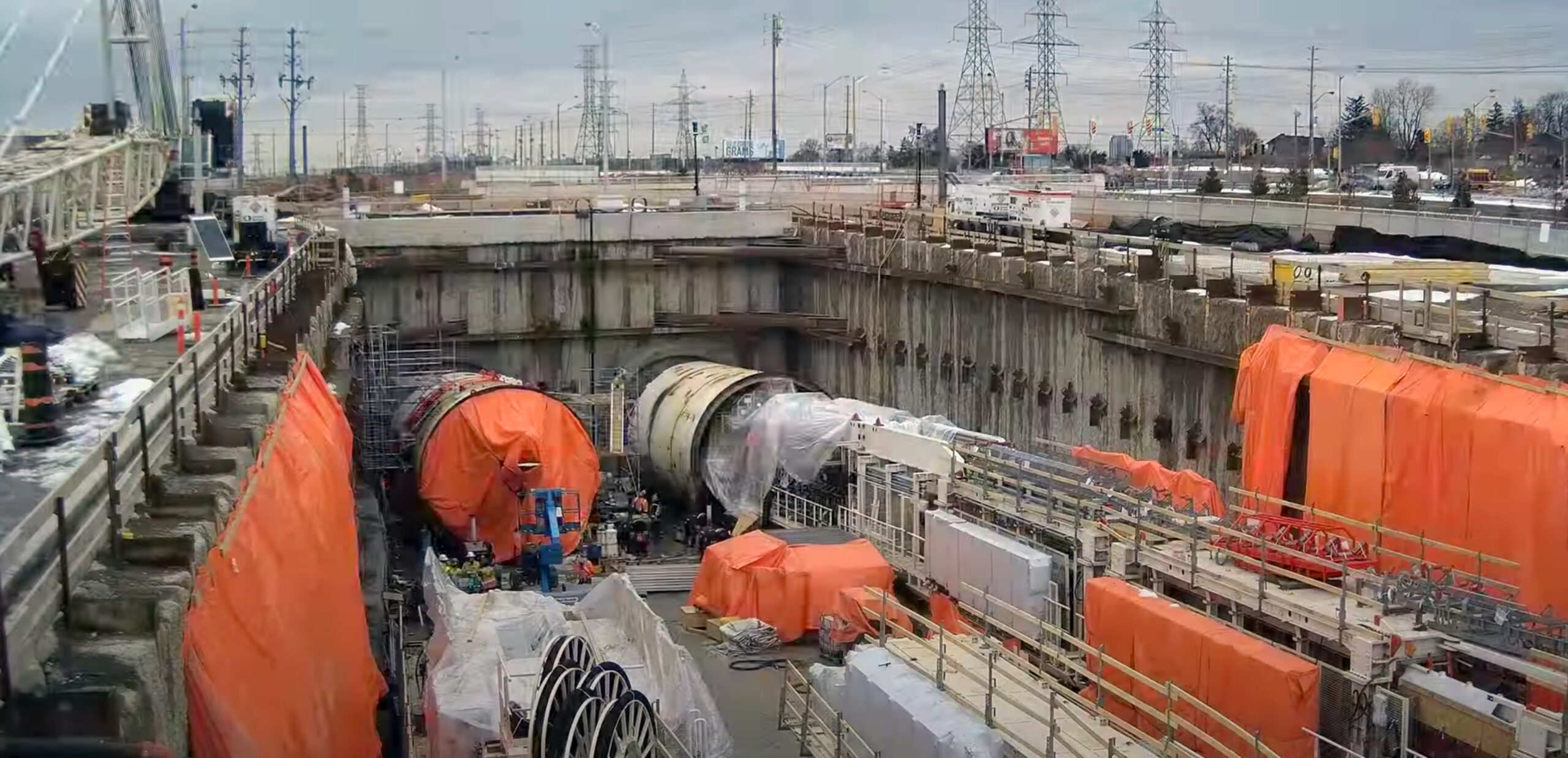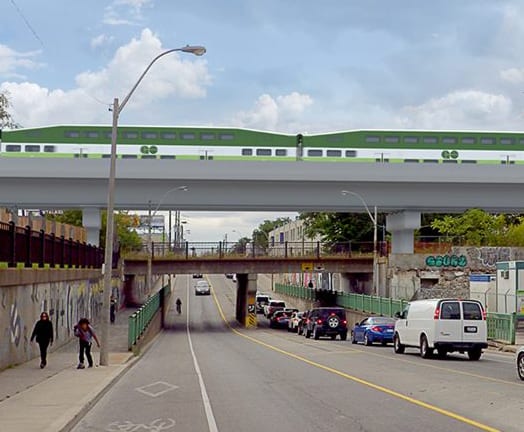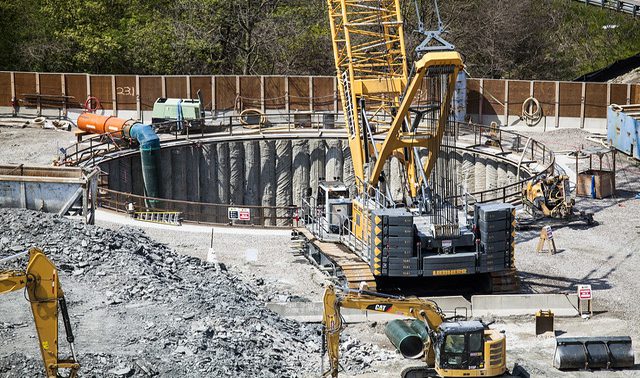Urban infrastructure such as road, rail, and air transportation networks are critical to modern life, and these ubiquitous systems are largely taken for granted by the public that relies on them. Other systems, just as critical to modern life, such as wastewater and stormwater management systems, are rarely even remembered by those that rely on them. But these systems become of keen interest and attract protracted and careful public scrutiny during construction!
Major municipal infrastructure projects are carried out in the public eye. Projects undertaken in dense urban environments, such as light rail projects, or tunneling for transit or water management require disruptive construction works for protracted periods within neighborhoods and communities. A certain amount of impact on the surrounding population during construction is inevitable, and well-managed projects take great care to minimize these effects. Two considerations which can make or break to public perception of a project are construction noise and construction vibration. Construction noise and vibration have become major considerations during the planning and implementation phases for many large-scale project.
HGC understands the noise and vibration problems that projects can create for themselves when due consideration is not paid early enough to these challenges. We have spent decades immersed in noise and vibration control, and have provided services for large-scale infrastructure projects in dense urban settings. HGC offers consultation services relating to acoustics, noise and vibration at all stages of a project
Noise and Vibration during Preliminary Project Design
There are many considerations that go into selecting project alignments for infrastructure projects. Where is the service needed most? Where will stations or drop shafts be of greatest benefit? But what services and structures will need to be moved or relocated? And where can our contractors find the room to work?
Construction methodologies can also vary greatly, with the norms in a particular region, the experience of interested contractors, and the availability of materials and equipment.
Different approaches have many implications, but one that is often not considered early enough is the implications to the likely noise and vibration impacts!
Early modeling of anticipated construction noise and vibration impacts can lead to better outcomes, by modifying or selecting better alternatives for project alignment, staging areas, access shafts and construction methods. HGC has a proven track record of predicting, modeling, assessing, and identifying construction noise and vibration problems before they happen.
During this stage, generic modeling can be undertaken to quickly predict and compare acoustic impacts from different project alternatives. The area can be reviewed to identify potentially problematic adjacencies which may have a heighted sensitivity to noise and vibration such as hospitals, labs, research and certain manufacturing uses. Identified risks can be addressed early, minimizing disruption and costs down the road.
Noise and Vibration during Detailed Project Design
During detailed design, preferred project alternatives are developed, and over time develop into a fully articulated constructable vision. During this process, representative locations for more refined prediction of noise and vibration can be identified, and through improved modeling, sound and vibration impacts can be predicted. Inroads can be made to hospitals or research institutions to better understand sensitivities. Through analysis, appropriate measures to mitigate construction noise and vibration impacts can be identified and defined, and built into project specifications to ensure that bidders fully understand their environmental obligations related to noise and vibration.
Noise and Vibration during Construction
At this stage, the rubber really hits the road. Ongoing construction vibration monitoring can go a long way to reassuring affected stakeholders that the contracting authority is acting with due diligence, and that unintended impacts will be identified and mitigated. The resulting documentation forms an articulate record of the vibration over the life of a project or activity, reassuring those otherwise concerned about the potential for vibration-related damage. Ongoing construction noise monitoring likewise helps to provide reassurance that the temporary inconveniences of construction are received consideration and that the authority is doing what can be done to mitigate disruption.


Davenport Diamond Rail Grade Separation Project

The Coxwell Bypass Tunnel Project

Clare R. Copeland Transformer Station

Fairbank Silverthorn Storm Trunk Sewer System

Blue Water Bridge Linking Ontario with Michigan

When Should I Consider Construction Vibration Monitoring?
Who We Help
Our Markets
Engineers, Architects, Planners, Environmental Health & Safety Specialists, Developers, Owners/Operators and Property Managers in sectors including:
Need Answers?
Reach out to our acoustical consultants now.